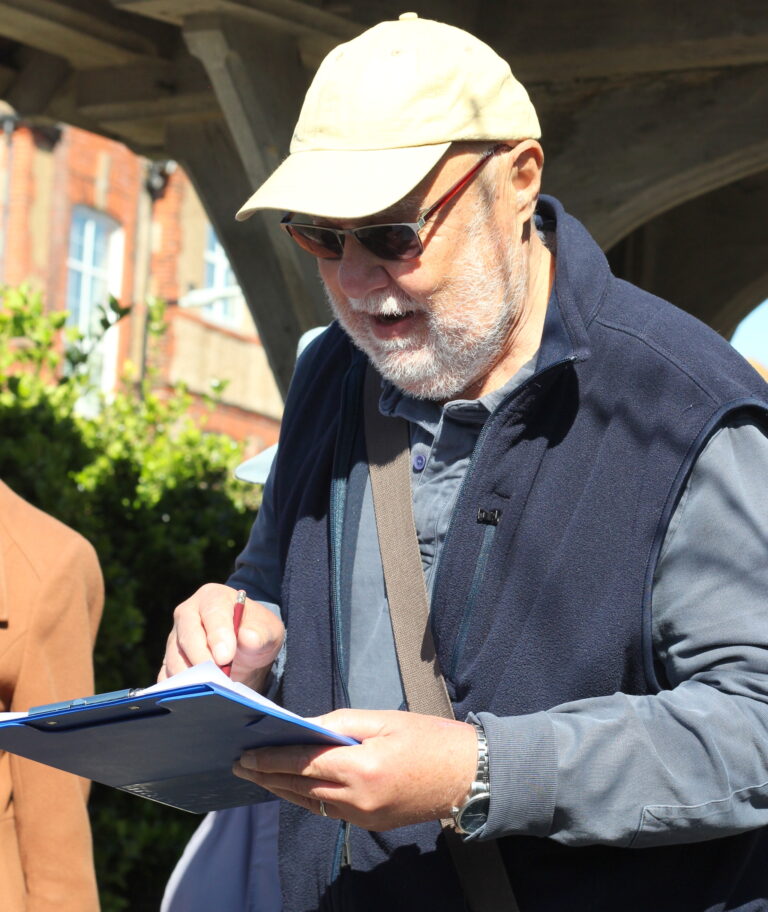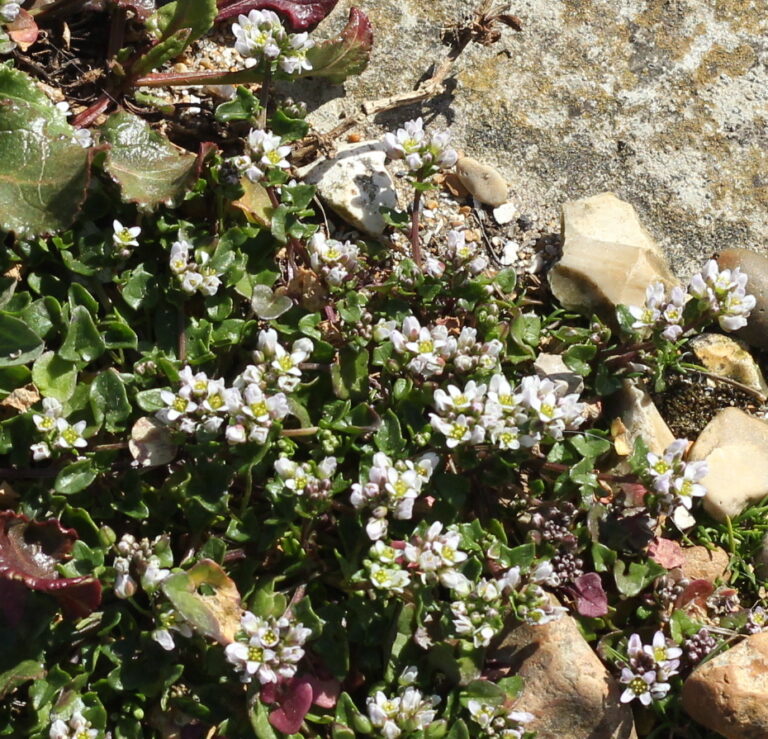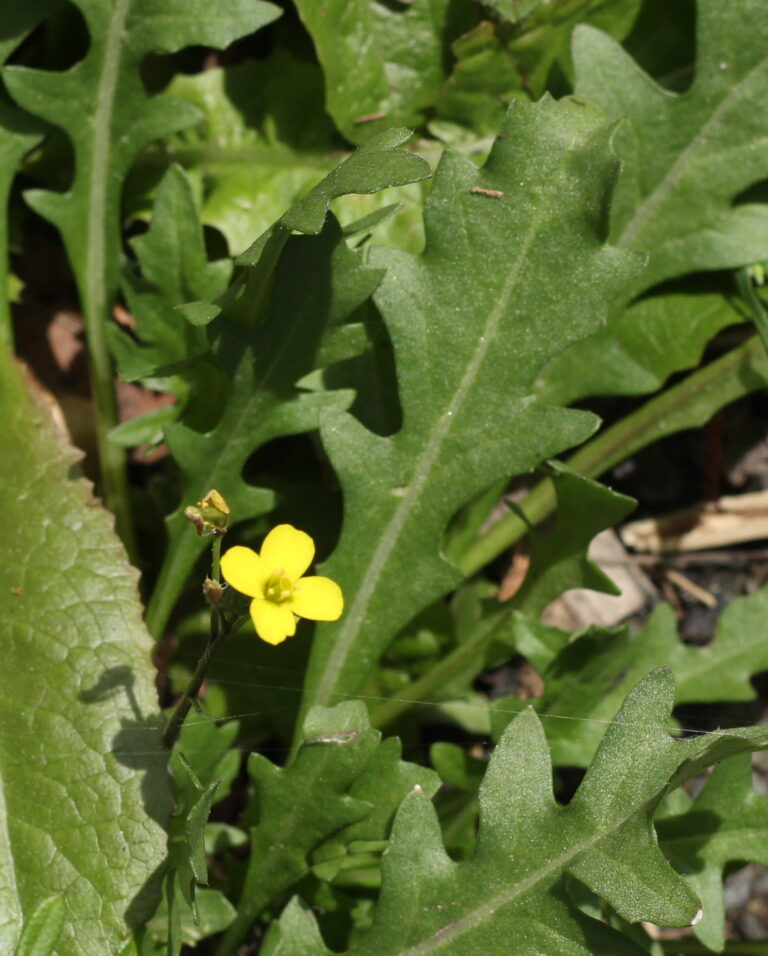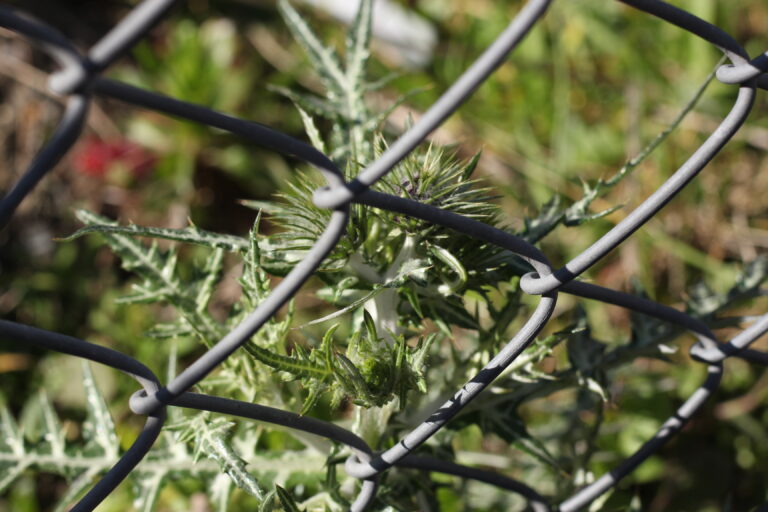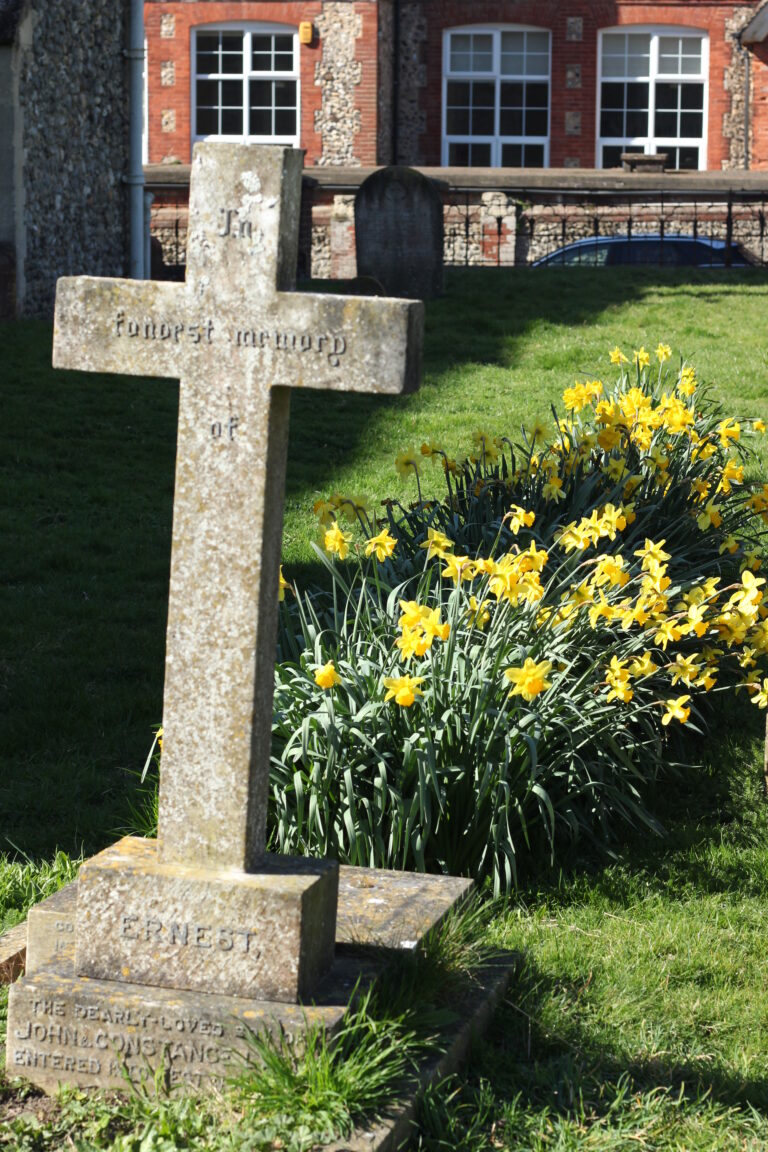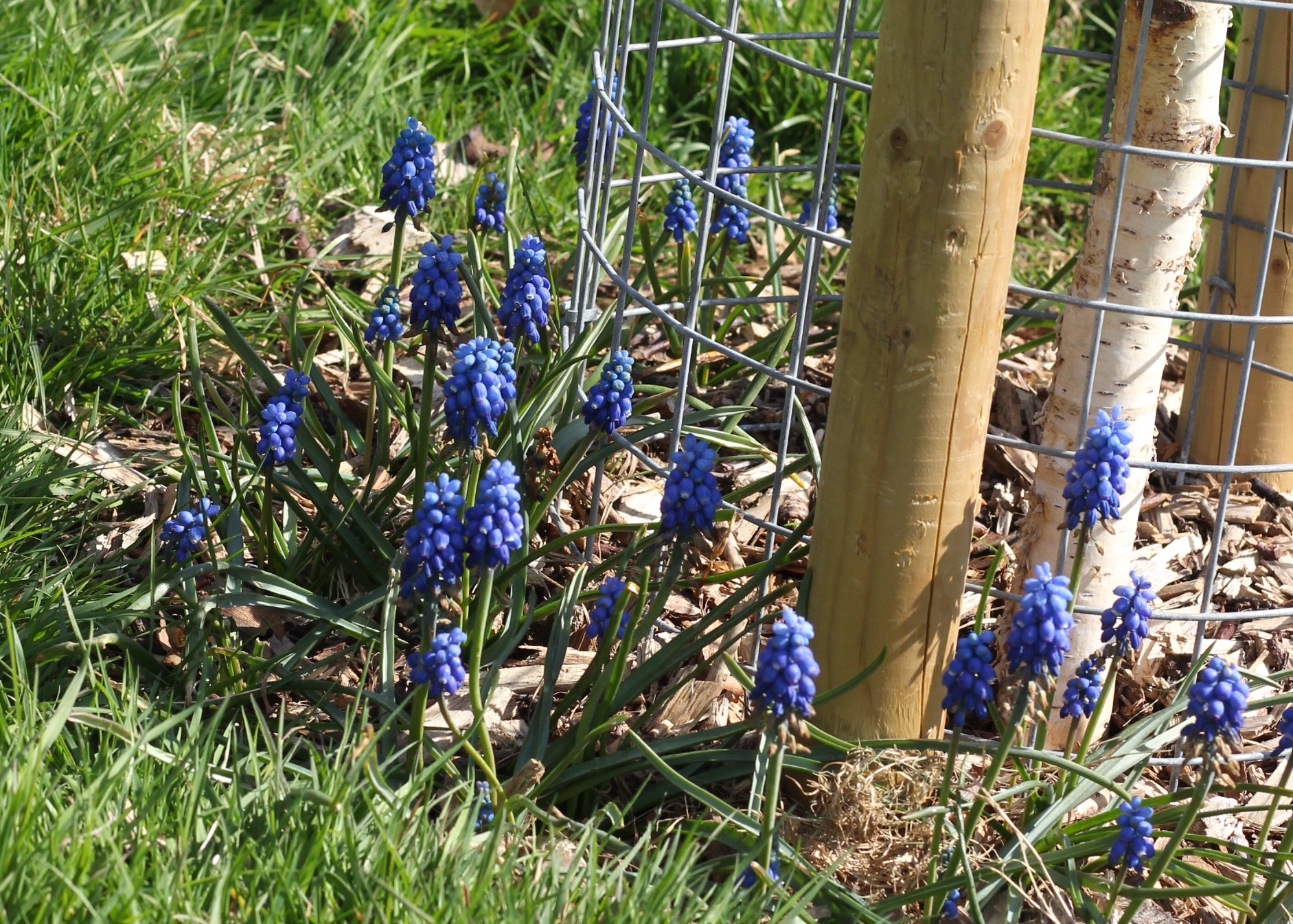You might suppose that a nature walk around Seaford town centre, might be a bit be dull. When we are surrounded by incredible wildlife habitats including vegetated shingle, chalk grassland and Seaford head nature reserve, what can a town centre stroll show us?
You might be surprised to know that we spotted 25 plants in flower, and saw or heard 11 species of bird, a few bees, a cranefly and a snail! Well worth keeping your eyes open in the town centre, perhaps on a walk from your own front door!
Starting at the station bus stop and ending at Splash point, we kept an eye out for plants and other wildlife. Along the way Mike gave us an informative talk about the town, including the location of the old seafront, and a rare post office plaque!
One plant that is popping up all over at the moment, is Danish scurvygrass. This is often seen on roadside and pavement edges where salt has been used on the roads. It is at its most pretty however in its natural habitat by the sea, where the heart shaped leaves are less obvious and the flower is in full glorious pink and white bloom.
We started to spot flowers straight away, the daisies and dandelions may be common but are a vital source of nectar for emerging bees. More common pavement edge plants include groundsel and the tiny white flowers of bittercress and shepherd’s purse. A more unusual plant -Mediterranean Thistle (Galactites tomentosa) was almost in flower behind the station carpark railings (Read more about this plant in Brian’s blog here!)
At the entrance to the churchyard, Mike battled to be heard above the lovely bell ringing going on! The very pretty ivy-leaved toadflax clung to a nearby wall. Within the grounds of the churchyard we found many more flowers including the sunny faces of lesser celandines, the blue of ground ivy and red dead nettle and the diminutive ivy-leaved speedwell.
Along old lanes and flint walls we also spotted more pavement huggers – petty spurge (a tiny rather insignificant member of the euphorbia family, forget me nots, and the bright yellow flowers of annual rocket and sticky mouse-ear. There was a wonderfully large black (presumably forgotten) plant pot in Broad street which is full (as it has been for some years) with the pretty but tiny flowers of common chickweed. These tiny white flowers are often difficult to identify – do check out Brian’s blog if you need help!
Heading towards Crouch gardens we were delighted to see the new trees, planted by Trees for Seaford, looking so healthy. Muscari bulbs round their mulched base looked pretty and will give valuable nectar to bees. Also spotted were a few Sweet violets in the top east corner, and fresh Green alkanet near the Bramber Road entrance at the bottom.
There weren’t a lot of flowers in the Sea Meadows (yet!); just a big patch of three-cornered garlic, and more precious Red dead nettle. Goldfinches twittered as they flew overhead, and were just one of eleven species of bird spotted or heard singing along the route. (others included wren, dunnock, herring gull, sparrow, starling, wood pigeon, robin, great tit, crow and cormorant)
Do come and join The “Friends of the Sea Meadows” group on Sunday 20th April for another flower walk round the stunning wild areas of these fields. (Link here)
In a pavement edge in College road we did spot another tiny tiny white flower (possibly sea or dwarf mouse-ear?!)

Through the Martello fields and pump field and we were at Splash point watching the high tide splashing the rocks. Sadly the kittiwakes weren’t around, but have been seen in recent weeks, so will no doubt be back soon, squabbling over the precarious cliffs where they build their nests. One solitary thrift flower showed its pretty head nearby.
Thanks so much to Mike and Seaford Natural History Society for organising these walks. Details of the next one can be found here, and the full schedule is here.
Judy (Seaford Action for Nature)
